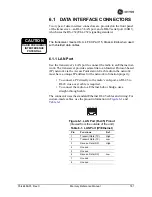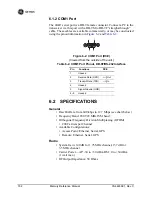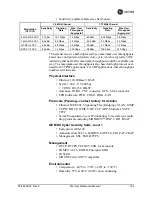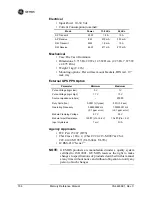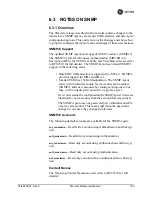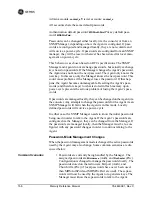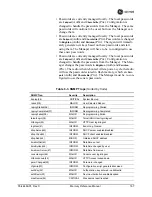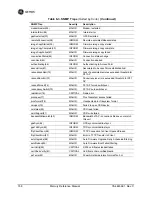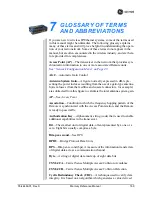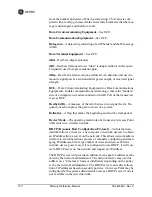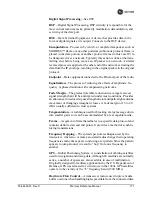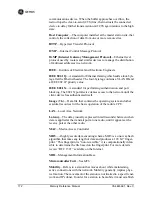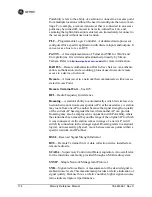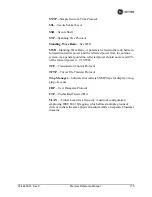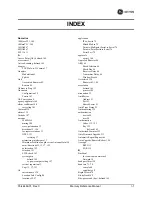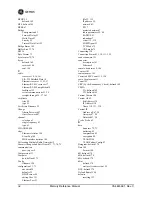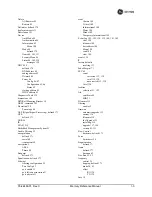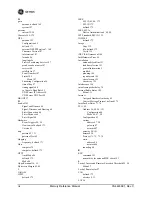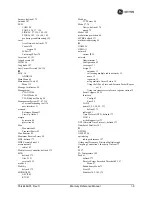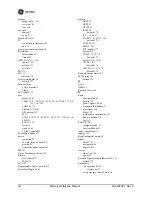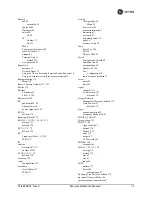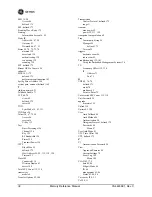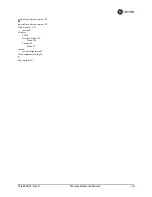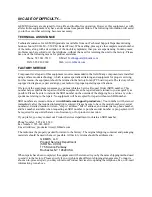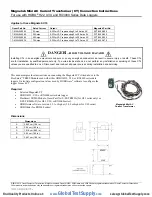
174
Mercury Reference Manual
05-4446A01, Rev. C
Portability refers to the ability of a station to connect to an access point
from multiple locations without the need to reconfigure the network set-
tings. For example, a remote transceiver that is connected to an access
point may be turned off, moved to new site, turned back on, and,
assuming the right information is entered, can immediately reconnect to
the access point without user intervention.
PLC
—Programmable Logic Controller. A dedicated microprocessor
configured for a specific application with discrete inputs and outputs. It
can serve as a host or as an RTU.
PuTTY
—A free implementation of Telnet and SSH for Win32 and
Unix platforms. It is written and maintained primarily by Simon
Tatham. Refer to
http://www.pobox.com/~anakin/
for more information.
RADIUS
—Remote Authentication Dial In User Service. An authenti-
cation, authorization, and accounting protocol used to secure remote
access to a device or network.
Remote
—A transceiver in a network that communicates with an asso-
ciated Access Point.
Remote Terminal Unit
—See
RTU
.
RFI
—Radio Frequency Interference
Roaming
—A station's ability to automatically switch its wireless con-
nection between various access points (APs) as the need arises. A station
may roam from one AP to another because the signal strength or quality
of the current AP has degraded below what another AP can provide.
Roaming may also be employed in conjunction with Portability where
the station has been moved beyond the range of the original AP to which
it was connected. As the station comes in range of a new AP, it will
switch its connection to the stronger signal. Roaming refers to a station's
logical, not necessarily physical, move between access points within a
specific network and IP subnet.
RSSI
—Received Signal Strength Indicator
RTU
—Remote Terminal Unit. A data collection device installed at a
remote radio site.
SCADA
—Supervisory Control And Data Acquisition. An overall term
for the functions commonly provided through an MAS radio system.
SNMP
—Simple Network Management Protocol
SNR
—Signal-to-Noise Ratio. A measurement of the desired signal to
ambient noise levels.This measurement provides a relative indication of
signal quality. Because this is a relative number, higher signal-to-noise
ratios indicate improved performance.
Summary of Contents for MDS Mercury Series
Page 2: ......
Page 10: ...2 Mercury Reference Manual 05 4446A01 Rev C ...
Page 28: ...20 Mercury Reference Manual 05 4446A01 Rev C ...
Page 36: ...28 Mercury Reference Manual 05 4446A01 Rev C ...
Page 140: ...132 Mercury Reference Manual 05 4446A01 Rev C ...
Page 142: ...134 Mercury Reference Manual 05 4446A01 Rev C ...
Page 156: ...148 Mercury Reference Manual 05 4446A01 Rev C ...
Page 168: ...160 Mercury Reference Manual 05 4446A01 Rev C ...
Page 184: ...176 Mercury Reference Manual 05 4446A01 Rev C ...
Page 194: ...I 10 Mercury Reference Manual 05 4446A01 Rev C ...


